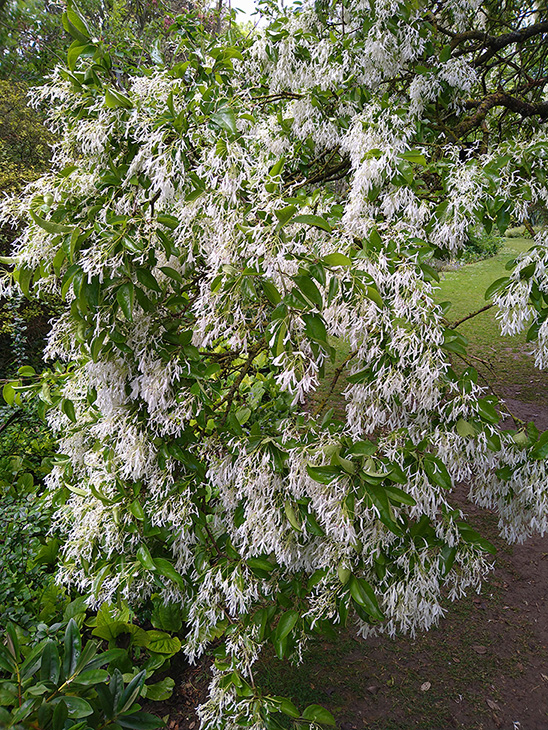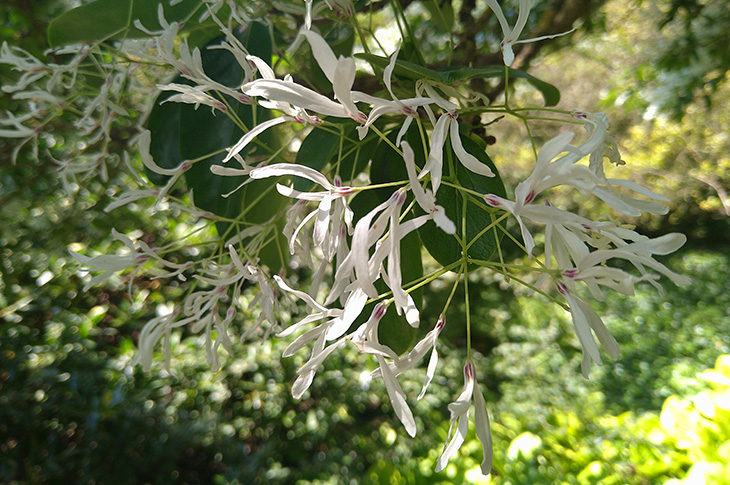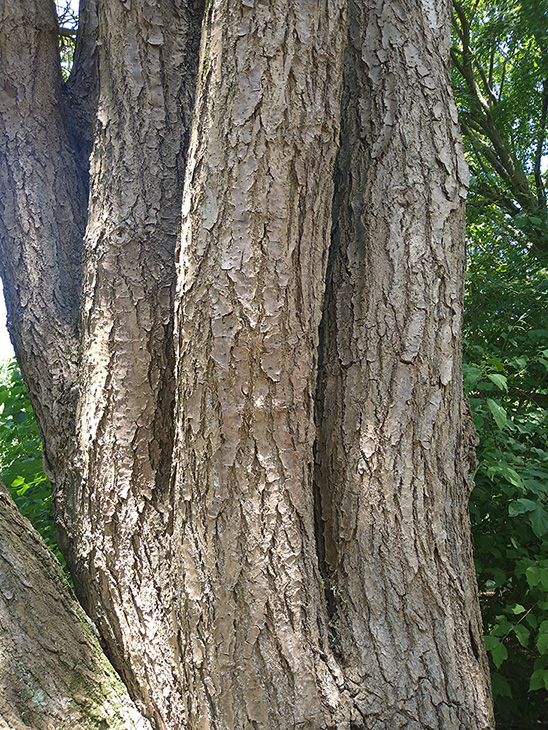Common names: Fringe tree or Chinese Fringe tree
Latin name: Chionanthus retusus
Found in eastern Asia: eastern and central China, Japan, Korea and Taiwan
The Chinese Fringe tree was first introduced to the UK in 1845 by Robert Fortune. Sir Frederick Stern bought the Highdown Gardens tree from Hillier Nurseries in 1934. It can be found in the middle garden and is one of my favourite trees. From a distance it is easy to see why it is called a fringe tree.
Photo: Fringe Tree – Chionanthus retusus

It is notable for its feathery white flowers and the name translates as snow flowers. It is not until you look closely that you are able to see the delicate flowers. When it loses its petals, it looks a bit like falling snow. It is a deciduous tree so in autumn its leaves turn yellow and shed.
Fringe Tree – Chionanthus retusus – flowers close up

In ‘A Chalk Garden’ by Stern the tree was featured in the July section and he stated: “Some of the finest of the flowering shrubs and trees bloom during this month”. Interesting to note that it now flowers a whole month earlier and can be seen in its full glory in June.
The Highdown Gardens Chinese Fringe tree has been awarded Champion tree status nationally for its height. It is related to Chionanthus virginicus which originates in America. The virginicus does not cope well with chalk but luckily for us the retusus does very well in the alkaline soil found at Highdown.
Historically the root was used as an antipyretic (reduces high temperature) and later for treating jaundice. I feel that sometimes we do not look at the whole tree especially when it is so beautiful in flower, but this tree also has another interesting feature; its bark. It is ridged and furrowed which gives it some winter interest and possibly hides invertebrates!
Photo: Fringe Tree – Chionanthus retusus – trunk and bark

One final fascinating fact; trees are either male or female. The male has slightly longer and showier petals, while the female bears dark blue fruit in the autumn. The Fringe tree at Highdown is male with the more showy flowers so no fruit!
Many thanks to Highdown’s Tour Guide Volunteer Anita Cannon, for writing this blog and taking the photos.